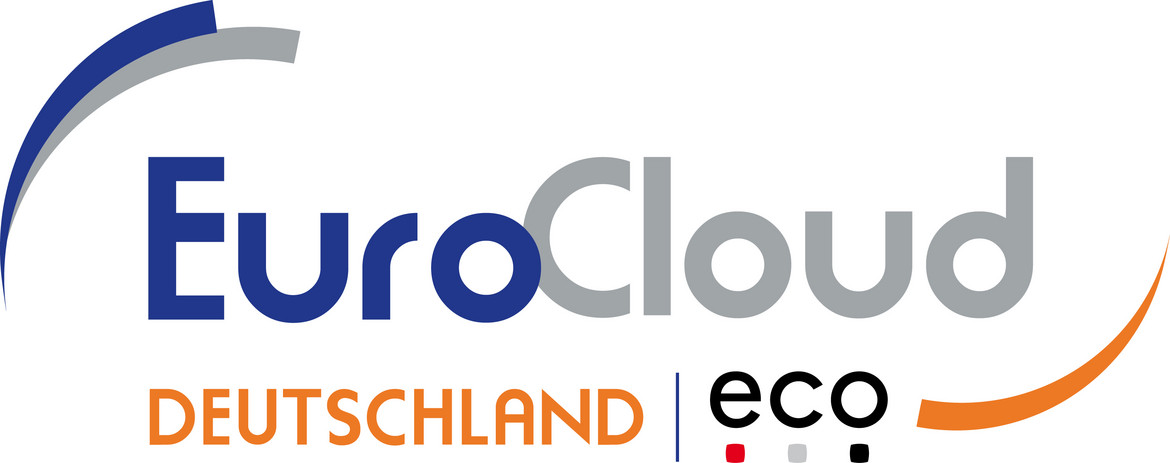Less Risk, More Business: How Cloud Native Technologies Modernize Applications
Those who modernize applications make their business more flexible. Ronny Olm from GECKO Software & Dr Josef Adersberger of QAware, on how agile software galvanizes business models.

© ipopba| istockphoto.com
Those who modernize applications make their business more flexible. “It’s not about moving old applications completely into the cloud,” says Ronny Olm from GECKO Software. What matters instead is “no longer seeing IT as an auxiliary support,” says Dr Josef Adersberger of QAware. How agile software galvanizes business models.

Ronny Olm
Senior Director, Software Development at GECKO Software

Dr. Josef Adersberger
Managing Director at QAware
Regardless of whether it’s a corporation, an SME, or a start-up – those who combine business know-how with cloud native applications make IT systems and business models more flexible. The relevance of these advantages is now frequently recognized by IT managers in Germany, as shown by a recent joint survey by ISG and EuroCloud Native (ECN). Of the 200 respondents who use or plan to use cloud and cloud native technologies, 22 percent are already working with cloud native approaches. A further 27 percent are planning to get started in the next twelve months.
Study: Businesses opting for minor adjustments
The aspects that can gain momentum for the German market are being curbed by the shortage of skilled workers. According to IT market researchers from ISG, this is reflected in how SMEs are moving monolithic legacy apps into the cloud native software future: every second company (44 percent) is only making minor adjustments, while just 27 percent are opting for new developments. Who can help? Specialist cloud native providers are the solution of choice for 85 percent of users: these include service providers such as GECKO Software, a member of the release42 group, and QAware. Both of these providers modernize applications for corporations, SMEs, and start-ups. And both are involved in the ECN, the cloud native initiative of EuroCloud Germany, the association of the German cloud computing industry.
Strategically develop and modernize apps
Whether it comes down to outdated programming languages, systems which are complex to administer, or security risks: “The reasons to modernize apps are not just down to technological factors,” says Ronny Olm, Senior Director Software Development at GECKO Software. “Needs emanate from the business model,” says Dr Josef Adersberger, Managing Director at QAware. From Internet of Things (IoT) services to data-based products and artificial intelligent (AI) applications: “Anyone who wants to tap into or expand new digital revenue streams needs modern software,” says Olm.
Rigid software stalls business development
Take merchandise planning and control, for example: “If you operate a JAVA-based booking system in the server room, you can run into problems if the business is to grow,” says Olm. What has sufficed for years starts to falter when multi-channel strategies are added to direct sales, and when an abundance of small transactions replace a few large orders, thereby challenging IT. “Systems not only need to be able to keep up with the pace of business, but should preferably always be one step ahead of it,” says Olm: “Rigid applications can lead to bottlenecks in warehouse logistics, for example.” If many goods are to be moved to customers at once, the software must make this possible. Olm: “If information for shipping labels can’t be drawn from the booking system on a parallel basis and fast enough, then you’ve already got a problem.”
Legacy applications pose security risks
There are also other fields in which IT can often impose boundaries on businesses: “When it comes to security risks, cloud native applications make their monolithic siblings look even older,” says Adersberger. Take Log4Shell, for example: At the beginning of December 2021, the German Federal Office for Information Security (BSI) warned of a serious vulnerability in the framework. “Anyone who patches this into legacy applications has to disrupt running processes, distribute updates at great expense, and deploy them everywhere they operate the relevant components,” says Adersberger. Things look different with cloud native applications. They are composed of loosely coupled and standardized software components that are easier to administer and update centrally. “We patched our containers once and then rolled them out everywhere,” says Adersberger: “Within 24 hours, we had updated all systems while they were running.”
Cloud native applications: Intelligent, automatic, scalable
Less risk and more business – if SMEs want to move in the cloud native direction, they need to understand how business software can work for them. “The time when entire departments organized their use of applications based on release cycles is over,” says Adersberger. “Public cloud software consists of containers, programming interfaces, and microservices,” says Olm. The standardized components can be woven together into apps and be intelligently automated, enabling autonomous scaling and constant provision of resources as needed. “This reduces the IT installation depth, which saves costs,” says Adersberger: “For example, in one project we migrated over 600 web applications to the public cloud, while 10 percent of the old applications could be switched off.” It’s no different with server licenses: Fixed basic costs can be galvanized in a cloud native manner.
Modernize software with perspective and on a step-by-step basis
What the experts recommend for modernizing software is to take a path involving small steps: “In principle, major effects can be realized on the strength of the smaller adjustments that companies are already making,” says Olm, but he goes on to note: “However, it comes down to knowing where the greatest leverage can be achieved. Short-term temporary fixes don’t help in the long run.” Measures can be derived from customers’ business models and their individual challenges. “We think about how to break up the monoliths to operate individual components in the places where they bring the greatest benefits,” says Olm: “It’s not about moving old applications completely into the cloud.” And, as Adersberger adds, “It’s not about doing everything new all the time either; the reality is in the middle ground.” Rather than spending a lot of money on immediately modernizing legacy applications in their entirety, it is advisable to map systems with perspective and on an iterative basis via the public cloud.
Analysis of the current landscape: Identifying weaknesses and opportunities
A prerequisite for the work’s success is, according to Adersberger, “a solid site assessment”. Olm goes on to say that, “in most cases, the current landscape sets the course.” Monolithic applications can be analyzed and mapped using special tools. On the strength of such an evaluation and visualization, weaknesses and opportunities can be identified. In line with this, the experts develop a strategy to modernize the IT landscape and move it to the public cloud. “We identify any application deadweight, package everything in a more streamlined manner, and integrate the functions it takes to incorporate apps into cloud native ecosystems,” says Adersberger. Olm’s view is that: “Cloud native apps are more compact, start up more quickly, are more secure, and are easier to monitor and administer.”
“Technological issues are surmountable,” says Olm. “What often remains challenging is the culture in people’s minds,” adds Adersberger. After all, opportunities for modern applications go hand in hand with change processes. Those who develop cloud native applications, for example, often have to safeguard their operation. “This involves more responsibility, which runs counter to established company structures,” says Olm. What matters: “To no longer see IT as an auxiliary support,” says Adersberger. Those who recognize how IT systems and software contribute to value creation begin to develop the landscape and systems strategically on their own initiative. Adersberger: “Once assured of the benefits, internal change follows logically.”
Agile software requires an agile organization
Any further recommendations? “A strategic overview of the topic,” says Dr Nils Kaufmann, who heads the ECN. “At a time when software is increasingly defining products, companies must make cloud technologies the core of their business model.” Those who then open up new markets in a planned and targeted manner will develop business, IT, and culture in a coordinated and sustainable manner. As Kaufmann goes on to say, “Agile software ultimately requires an agile organization.”
Accelerating and streamlining processes in order to save costs and minimize risks – not everything that the public cloud promises is exactly what ultimately happens. Olm: “Those who want to cut costs only reap rewards if they know how to fully exploit the functions.” The same applies to IT security: after all, today’s attacks take place at the code level. “Public clouds always offer up-to-date and affordable security functions,” says Adersberger: “What is decisive is to also harness the opportunities on a cloud native level.”
Nils Klute is IT Editor and Project Manager Communication Cloud Services at EuroCloud Germany. He is responsible for content marketing activities on topics such as Gaia-X and AI, supports initiatives such as Service-Meister, EuroCloud Native or systems integrators on their cloud journey. Prior to his start at eco in 2018, Nils worked as a corporate journalist for IT corporations (like SAP, T-Systems, and QSC at Cologne-based communication agency Palmer Hargreaves) and previously held public relations positions at market and economic research institutions.
Please note: The opinions expressed in Industry Insights published by dotmagazine are the author’s own and do not reflect the view of the publisher, eco – Association of the Internet Industry.




